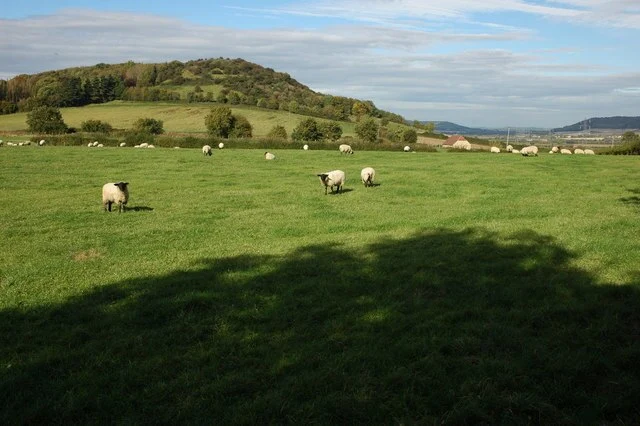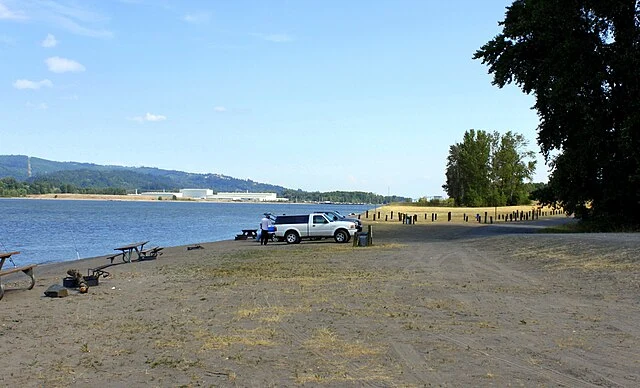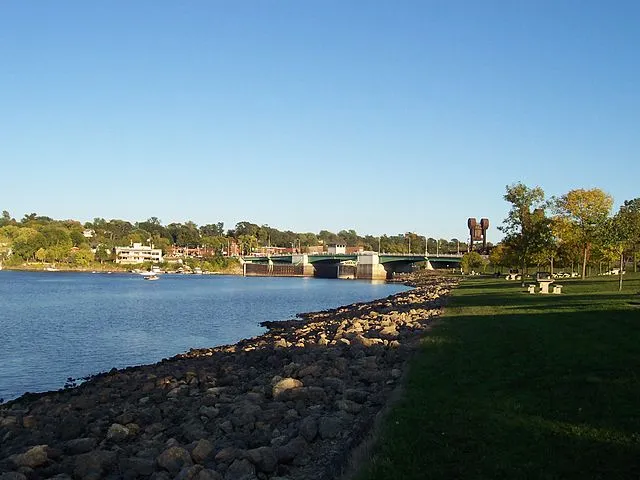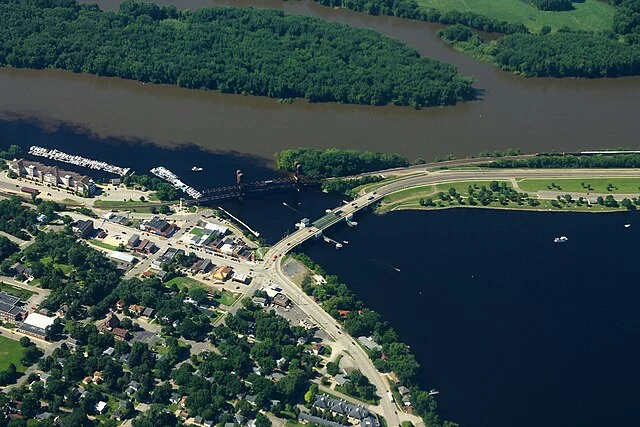Understanding Prescott’s Unique Climate Zone
Nestled in the Bradshaw Mountains of central Arizona, Prescott enjoys a climate that’s dramatically different from the scorching desert heat most people associate with Arizona. At an elevation of 5,368 feet, this charming city experiences what meteorologists classify as a semi-arid highland climate, creating a weather pattern that’s more reminiscent of Colorado than the Sonoran Desert.
What makes Prescott’s weather so special? The elevation is the game-changer here. Think of it like climbing a mountain – for every 1,000 feet you go up, the temperature drops by about 3.5 degrees Fahrenheit. This means Prescott stays significantly cooler than Phoenix, which sits at just 1,086 feet above sea level. The result? You get to enjoy four distinct seasons without the extreme heat that dominates much of Arizona.
The city’s location also puts it in a sweet spot for precipitation. While it’s not as wet as the Pacific Northwest, Prescott receives considerably more moisture than the lower desert regions. This creates a unique ecosystem where ponderosa pines thrive alongside high-desert vegetation, giving the area its distinctive character and natural beauty.
The Four Seasons in Prescott: What to Expect Year-Round
One of the most delightful aspects of Prescott’s climate is experiencing genuine seasons. Unlike many Arizona cities where you have “hot” and “less hot,” Prescott offers a traditional four-season experience that residents and visitors absolutely love.
Spring Weather in Prescott (March-May)
Spring in Prescott is like watching nature wake up from a peaceful slumber. March can still be quite chilly, with morning temperatures often dipping into the 30s, but by afternoon, you’ll find yourself enjoying comfortable 60-degree weather. It’s the perfect time for hiking, as the wildflowers begin their spectacular show across the high desert landscape.
April brings more consistent warmth, with daytime highs reaching the pleasant 70s. This is when Prescott truly shines – the air is crisp, the skies are often brilliantly blue, and you can actually spend the entire day outdoors without wilting from heat. The nights remain cool, perfect for cozy fires and stargazing.
May marks the transition toward summer, with temperatures climbing into the upper 70s and low 80s. The weather is absolutely perfect for outdoor activities, from hiking and biking to simply enjoying a meal on a restaurant patio. Spring also brings occasional rain showers, which help keep the dust down and the vegetation green.
Summer Climate: Escaping the Desert Heat
Here’s where Prescott really shows off. While Phoenix is baking at 115°F in July, Prescott is enjoying delightful 80-degree weather. Summer in Prescott is what summer should be – warm and pleasant during the day, cool and comfortable at night.
The summer months from June through August see daytime highs typically in the low to mid-80s, with nighttime temperatures dropping into the 50s. This dramatic temperature swing means you can enjoy barbecues and outdoor activities during the day, then sleep comfortably at night without running air conditioning all night long.
Summer also brings the monsoon season, which we’ll discuss in detail later. These afternoon thunderstorms provide spectacular lightning displays and help cool things down even further. The rain also brings out the green in the high desert, creating some of the most beautiful scenery you’ll find anywhere in Arizona.
Fall Colors and Comfortable Temperatures
Fall in Prescott is nothing short of magical. The changing leaves create a stunning backdrop of gold, red, and orange that rivals anything you’ll see in New England. September and October offer some of the best weather of the year, with warm, sunny days and crisp, cool nights.
September temperatures typically range from the mid-50s at night to the upper 70s during the day. It’s perfect weather for hiking, camping, or just enjoying the outdoors. October brings even more comfortable conditions, with daytime highs in the 70s and nighttime lows in the 40s.
November starts the transition toward winter, but it’s still incredibly pleasant. You might need a light jacket in the morning, but by afternoon, you’ll often find yourself back in a t-shirt. The fall weather makes it an ideal time for outdoor festivals and events, which Prescott hosts in abundance.
Winter Weather: Snow in the Arizona Mountains

Yes, it really does snow in Prescott! Winter brings a completely different character to this mountain town. While it’s not the harsh, months-long winter you might experience in Minnesota, Prescott does get snow, and it’s absolutely beautiful.
December through February see daytime highs in the 50s and nighttime lows that can drop well below freezing. Snow is common, though it rarely stays on the ground for more than a few days. The average annual snowfall is about 12 inches, which is enough to create a winter wonderland without making life difficult.
Winter weather can be quite variable. You might have a beautiful 60-degree day followed by a snowstorm the next day. This variability keeps things interesting and means you need to be prepared for anything. The good news is that even when it snows, it usually melts quickly, and the roads are generally clear within a day or two.
Monthly Weather Breakdown for Prescott
Understanding what to expect each month can help you plan your visit or prepare for living in Prescott. Let’s break down the weather patterns month by month.
January and February: The Coldest Months
January is typically the coldest month in Prescott, with average highs around 50°F and lows around 22°F. Don’t let those numbers scare you – it’s still much more pleasant than winter in many parts of the country. The air is dry, so even cold temperatures feel more comfortable than humid cold.
February begins the slow climb toward spring, with slightly warmer temperatures and longer days. You’ll start to see more sunny days, though snow is still possible. This is a great time for indoor activities and enjoying the cozy atmosphere of Prescott’s many cafes and restaurants.
March Through May: Spring Awakening
March marks the beginning of Prescott’s glorious spring season. Average highs climb into the 60s, and you’ll start to see the first wildflowers blooming in the high desert. The weather can still be quite variable, with warm afternoons and chilly mornings.
April and May are arguably the best months weather-wise in Prescott. Temperatures are perfect for any outdoor activity, rain is minimal, and the landscape is at its most beautiful. If you’re planning a visit, these months should be at the top of your list.
June Through August: Pleasant Summer Refuge
Summer in Prescott is what draws many people to move here permanently. June sees average highs in the low 80s, with very low humidity. The monsoon season typically begins in July, bringing afternoon thunderstorms and slightly higher humidity, but temperatures remain pleasant.
August continues the monsoon pattern, with dramatic afternoon storms followed by cool, clear evenings. The rain during monsoon season is actually quite welcome, as it cools things down and creates some spectacular scenery with dramatic cloud formations.
September Through November: Perfect Fall Weather
September marks the end of monsoon season and the beginning of fall. The weather is absolutely perfect – warm days, cool nights, and crystal-clear skies. This is peak hiking season, as the temperatures are comfortable and the scenery is at its most beautiful.
October brings the stunning fall colors that make Prescott famous. The aspens turn golden, the oaks turn red, and the entire landscape looks like a painting. November continues the pleasant fall weather, though temperatures begin to drop as winter approaches.
December: Holiday Weather and Winter Prep
December in Prescott often feels like a perfect holiday movie. There’s a good chance of snow, creating a beautiful winter wonderland, but it’s not so harsh that it ruins your plans. The holiday season in Prescott is particularly magical, with the town decorated for Christmas and the possibility of a white Christmas.
Prescott vs. Phoenix: A Climate Comparison
The difference between Prescott and Phoenix weather is dramatic enough that they might as well be in different states. While Phoenix swelters in 115°F heat during summer, Prescott enjoys pleasant 80-degree weather. This temperature difference is consistent throughout the year, making Prescott a popular retreat for Phoenix residents.
In winter, the difference is equally striking but in reverse. While Phoenix enjoys mild 70-degree weather, Prescott can be quite cold with snow and freezing temperatures. This creates interesting migration patterns, with some people spending summers in Prescott and winters in Phoenix.
The precipitation differences are also significant. Phoenix receives about 8 inches of rain per year, while Prescott gets around 19 inches. This extra moisture supports different vegetation and creates a much greener landscape in Prescott.
Extreme Weather Events and Seasonal Challenges

While Prescott’s weather is generally pleasant, it’s not without its challenges. Understanding these potential issues can help you prepare and stay safe.
Monsoon Season: Understanding Arizona’s Summer Storms
The North American Monsoon typically runs from July through September, bringing dramatic afternoon thunderstorms to Prescott. These storms can be intense, with heavy rain, lightning, and occasionally hail. While they’re generally brief, they can cause flash flooding in low-lying areas.
The positive side of monsoon season is the spectacular lightning displays and the cooling effect of the rain. Many residents actually look forward to monsoon season because it provides relief from the heat and creates some of the most beautiful skies you’ll ever see.
Fire Season and Weather Considerations
Like much of the American West, Prescott faces wildfire risk, particularly during dry periods. The fire season typically runs from late spring through early fall, with the highest risk during hot, dry, windy conditions. The good news is that Prescott has excellent fire prevention and suppression resources.
Weather conditions that increase fire risk include low humidity, high temperatures, and strong winds. Residents and visitors should be aware of fire restrictions and always follow safe practices when outdoors.
Best Times to Visit Prescott Based on Weather
If you’re planning a visit to Prescott, timing can make a huge difference in your experience. The best times to visit depend on what you want to do and your weather preferences.
For outdoor activities like hiking and camping, late spring (April-May) and early fall (September-October) offer the best conditions. The weather is pleasant, precipitation is minimal, and the scenery is at its most beautiful.
Summer is perfect if you’re escaping the heat of lower-elevation cities. While it’s not as cool as spring or fall, it’s still very comfortable compared to most of Arizona.
Winter can be beautiful if you enjoy snow and don’t mind cooler temperatures. The holiday season is particularly magical in Prescott, with the possibility of snow adding to the festive atmosphere.
Outdoor Activities and Weather Conditions
Prescott’s weather makes it ideal for year-round outdoor activities, though different seasons favor different pursuits.
Hiking and Weather Safety Tips
Prescott offers some of the best hiking in Arizona, with trails suitable for all skill levels. The weather is generally favorable for hiking, but there are some important safety considerations.
Summer hiking should be planned for early morning or late afternoon to avoid the heat and potential afternoon thunderstorms. Always carry plenty of water, even in cooler weather, as the high altitude and dry air can lead to dehydration more quickly than you might expect.
Winter hiking requires different preparation. While it’s rarely extremely cold, conditions can change quickly, and snow can make trails slippery. Always check weather conditions before heading out and be prepared for temperature changes.
What to Pack for Prescott’s Variable Climate

Prescott’s weather can be surprisingly variable, so packing smart is important whether you’re visiting or moving here permanently.
The key is layering. Even in summer, you’ll want a light jacket for evening, as temperatures can drop significantly after sunset. In winter, you’ll need warm clothing for cold mornings and evenings, but you might find yourself shedding layers as the day warms up.
Don’t forget rain gear during monsoon season. While the storms are typically brief, they can be intense, and you’ll want to stay dry. A light rain jacket or umbrella is usually sufficient.
Weather Resources and Forecasting Tools
Staying informed about Prescott’s weather is important for planning activities and staying safe. The National Weather Service provides excellent forecasts and warnings for the area.
Local news stations also provide detailed weather forecasts, often with specific information about mountain weather conditions. Many residents also use weather apps that provide hourly forecasts and radar imagery.
For outdoor activities, it’s worth checking multiple sources and being prepared for conditions to change quickly, especially during monsoon season.
Climate Change Impact on Prescott Weather
Like many areas in the American West, Prescott is experiencing some changes in its climate patterns. Average temperatures have increased slightly over the past several decades, and precipitation patterns have become somewhat more variable.
These changes are generally subtle and don’t dramatically alter the overall pleasant nature of Prescott’s climate. However, they do mean that extreme weather events may become more common, and fire risk may increase during dry periods.
The good news is that Prescott’s elevation and location help buffer it from some of the more extreme effects of climate change that lower-elevation desert areas are experiencing.
Conclusion
Prescott’s weather is one of its greatest assets, offering a perfect blend of four distinct seasons, pleasant temperatures, and enough variety to keep things interesting. Whether you’re escaping the desert heat in summer, enjoying the fall colors, or experiencing a rare Arizona snowfall, Prescott’s climate provides something special throughout the year.
The city’s unique elevation and location create a microclimate that’s dramatically different from the rest of Arizona, making it a true mountain paradise. From the wildflower blooms of spring to the cozy snow-covered winters, Prescott’s weather enhances every aspect of life in this beautiful mountain town.
Whether you’re planning a visit or considering making Prescott your home, understanding the weather patterns will help you make the most of everything this amazing place has to offer. The climate here isn’t just livable – it’s truly enjoyable, making every day feel like a gift from nature.
Frequently Asked Questions
Q: Does it really snow in Prescott, Arizona?
A: Yes, Prescott typically receives about 12 inches of snow annually. While snow events are common during winter months, the snow usually melts within a few days due to the intense Arizona sunshine and relatively mild daytime temperatures.
Q: How much cooler is Prescott compared to Phoenix?
A: Prescott averages about 20-30 degrees cooler than Phoenix year-round due to its elevation of 5,368 feet. In summer, while Phoenix reaches 115°F, Prescott enjoys pleasant temperatures in the low 80s.
Q: When is monsoon season in Prescott?
A: Monsoon season typically runs from July through September, bringing afternoon thunderstorms with heavy rain, lightning, and occasionally hail. These storms usually last 1-2 hours and are followed by clear, cool evenings.
Q: What’s the best time of year to visit Prescott for outdoor activities?
A: Late spring (April-May) and early fall (September-October) offer the best conditions for hiking, camping, and outdoor activities. The weather is pleasant, rainfall is minimal, and the scenery is at its most beautiful during these periods.
Q: How should I dress for Prescott’s variable weather?
A: Layering is key in Prescott. Even in summer, bring a light jacket for cool evenings. In winter, dress warmly for cold mornings but be prepared to shed layers as temperatures can reach the 50s or 60s by afternoon. Always pack rain gear during monsoon season.

